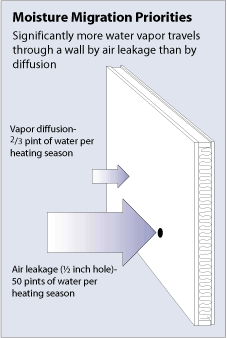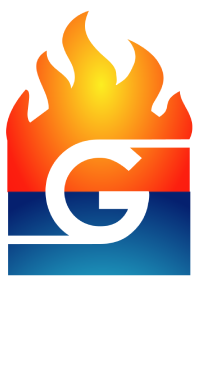MOISTURE CONTROL
Depending on your climate and how your home is constructed, moisture control improves the effectiveness of your air sealing, insulation efforts, and increases your home’s overall energy efficiency.
How Moisture Moves Through A Home:

Basics of movement of moisture:
Moisture moves in and out of a home in the following 3 ways
- With air currents
- By diffusion through materials.
- By heat transfer.
Out of these three, air movement is responsible for most of the water vapor movement in building cavities.
However, the movement of moisture mostly depends on the climate where your house is built. You should take that into account and pay immense attention in the insulation of your house.
The most important parts of a home for moisture control strategies:
- Attics
- Foundation( basement, crawl space, slab-on-grade floors)
- Walls
Vapor Barriers or Vapor Diffusion Retarders, and proper ventilation are the main parts of a moisture control strategy.
How They Work
A vapor barrier or vapor diffusion retarder reduces the rate of movement of water vapor through a material. Hence, nothing can stop the complete diffusion of water vapor, the term “vapor diffusion retarder is more suitable.
The unit used to measure the water vapor diffusing ability of any material is “perm”. Any material with a perm rating of less than 1.0 is considered as a vapor retarder.
The main areas where vapor diffusion retarders can control moisture:
- Basements.
- Ceilings.
- Crawl spaces.
- Floors.
- Slab-on-grade foundations.
- Walls.
To properly control the moisture in these areas and throughout a home, air sealing gaps are needed.

The decision to use vapor diffusion retarders is taken by considering the climate outside your home. That climate is analyzed using heating degree days.
Types of Vapor Diffusion Retarders
The common forms of vapor diffusion retarders are membranes or coatings. Membranes are generally thin and flexible. “Structural” vapor diffusion retarders or thicker sheet materials like rigid foam insulation, reinforced plastics, aluminium, and stainless steel are also mechanically fastened and sealed at the joints.
Plastic sheet material like Polyethylene is used as vapor diffusion retarder in cold climates with 8000 heating degree days or higher.
Any paint-like coating can also be considered as vapor diffusion retarders.
Installing Vapor Diffusion Retarders For New Construction
Materials like painted gypsum wallboard and plaster wall coatings are enough for moisture diffusion in climates with less than 4000 heating degree days.
Vapor diffusion retarders are necessary for new construction in more extreme climates. Their best performance is observed when they are installed closest to the warm side of a structural assembly that is towards the interior of the building in cold climates. And, this is towards the exterior of the building in hot/wet climates.
Ideally vapor diffusion retarders with ratings of 0.1 or less should be used. But, if the warm-side vapor diffusion retarder and interior finish is properly sealed, a low permeable material such as rigid foam board insulation (a perm rating as high as 1.4) can be used on the colder side.
A vapor diffusion retarder should be continuous and as nearly perfect as possible. The tears, openings, or punctures that may occur during construction should be completely sealed. Otherwise, the performance of the vapor diffusion retarder can be degraded.
Installing Vapor Diffusion Retarders In Existing Homes
It is very difficult to add vapor diffusion retarders in an existing home. Only during massive remodeling projects, they can be installed. However, vapor diffusion retarders are unnecessary for most of the existing homes. They already have multiple layers of paint on their walls. Those multiple layers act as a good vapor diffusion retarder.
“Vapor barrier” paints can be considered as good vapor diffusion retarders for colder climates. The formulas of the paints normally indicate the percent of pigment. Glossy paints, flat paints, acrylic paints, latex paint are differently compatible as vapor diffusion retarders. You should check their labels to know their vapor diffusion retarding capability.
